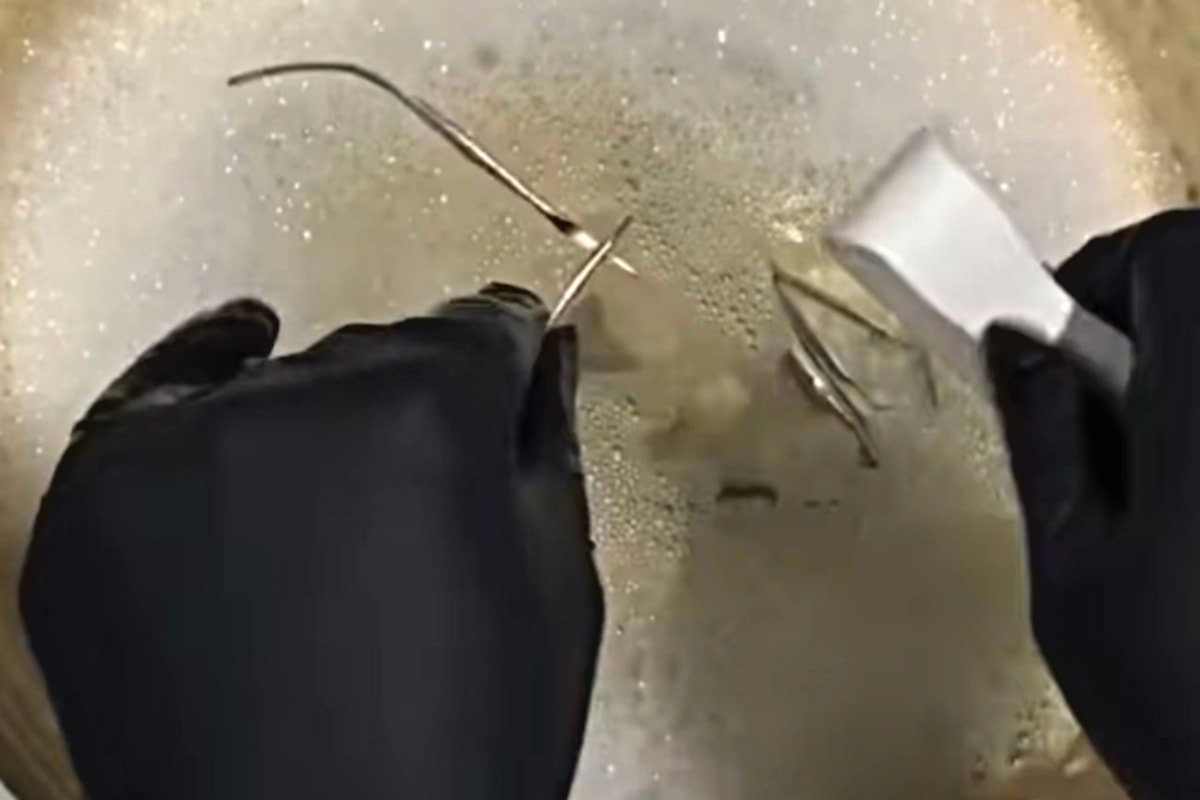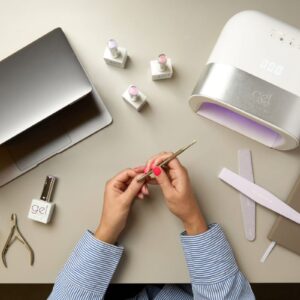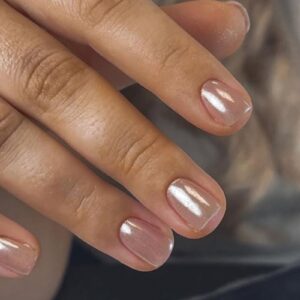
4 items you should be sanitising alongside your nail tools
By Katie Barnes | 23 June 2023 | Expert Advice, Feature, Health & wellbeing

You clean, disinfect and sterilise your nail tools, but on what else should you carry out these processes?
Any reusable items that come into contact with clients’ skin or nails must be sanitised, disinfected and sterilised, depending on your country’s regulations. Protocols referred to in this blog are applicable to UK legislation. Remember, single use, non-reusable items include nail files, orange wood sticks, spatulas, cotton wool and couch roll.
Let’s recap on the processes of sanitisation, disinfection and sterilisation…
Sanitisation (cleaning)
Cleaning is the process of reducing the amount of organic matter that can contribute to bacteria and viruses. Sanitisation is the step before disinfection and sterilisation, as visible or invisible debris left on the surfaces of items can cause issues with the effectiveness of the disinfection and sterilisation processes.
Methods of sanitisation include:
- Hand-washing.
- Cleaning surfaces with sprays or wipes.
- Washing tools in warm, soapy water.
- All varieties of wipes.
- Antibacterial sprays.
- Sanitiser sprays and gels.
UK government legislation states that wipes are only sufficient sanitisation if they contain 60% ethyl alcohol.
Disinfection
Disinfection is a sufficient level of microorganism control, when skin is not cut or broken. It is the process of destroying pathogenic microorganisms and removing most viruses, spores and fungi present on surfaces. Disinfectants work by destroying the cell wall of microorganisms or interfering with their absorption.
Disinfection does not necessarily kill all microorganisms, especially resistant bacterial spores, meaning it is less effective than sterilisation. For disinfection to be effective, all surface areas need to be covered sufficiently, so liquid solutions and fully submerging items are recommended. Sprays and wipes cannot guarantee to cover whole surface areas adequately.
Methods of disinfection include:
Sterilisation
Sterilisation is a process that eliminates all forms of life, including transmissible agents such as viruses, bacteria, fungi and spore forms. It should be performed on metal tools, but not plastics.
Sterilisation can be achieved by applying chemicals, high pressure, heat, irradiation, filtration or a combination of these. This includes hospital approved autoclaves and some sterilising solutions. Check the ingredients on solutions, as they can often be marketed as sterilising products but are in fact disinfectants.
What can be sanitised, disinfected and sterilised?
Nail brushes
Nail brushes that remove dust from clients’ nails or are used to clean tools or E-file bits must be sanitised, then disinfected in hospital grade solution. This solution should then be rinsed, if recommended by the manufacturer, as leaving it could cause irritation to clients. Nail brushes with plastic handles cannot be sterilised in an autoclave, as only metal items are suitable for this. I recommend having several nail brushes to use and clean in rotation.
It is recommended that fluffy brushes are not used to remove dust, as they only move it around clients’ hands. They are also not able to be disinfected, so invest in a stiff bristle brush that can.

Reusable nail files
Nail files are reusable when they come with a metal or plastic core, and the file itself peels off and is disposed after each use. It is important to sanitise and disinfect this core after each use, therefore I recommend having several cores so while one is being cleaned, you have one for use on clients.
Foot files
When foot files have a plastic core, they are designed for single use. Other styles of foot file have a metal core, with either peel-off adhesive or a reusable grit. These metal cores can be sanitised, disinfected and sterilised.
E-file bits
E-file bits should not be reused on multiple clients consecutively. They must be sanitised and disinfected in between every use. To clean E-file bits, firstly debris must be removed, with a wire or stiff brush. Next, wash the bits in warm soapy water, followed by disinfection. Metal E-file bits can be autoclaved, but this is not required unless they come into contact with blood or bodily fluid. Be careful placing E-file bits with a coloured coating in an autoclave, as the coating may prematurely fade.

Remember, the brushes you use in conjunction with sanitisation must also be sanitised and disinfected.
What about nail products?
Two independent scientific studies confirm that nail products such as polish and gels do not harbour microbes, so it is unlikely that any pathogen could be spread to cause infection. Water-based cosmetic products typically contain preservatives to prevent microbial contamination, and the solvent content breaks down the cell walls of any pathogens inside the bottles or pots.
The rule to follow is: plastic items can be sanitised and disinfected but not sterilised, and metal items have been designed to withstand the heat of autoclaves, so can be sterilised following sanitisation and disinfection. Always wear gloves when sanitising and disinfecting, to prevent irritation to your hands.
Love Katie B x

Read the latest issue









